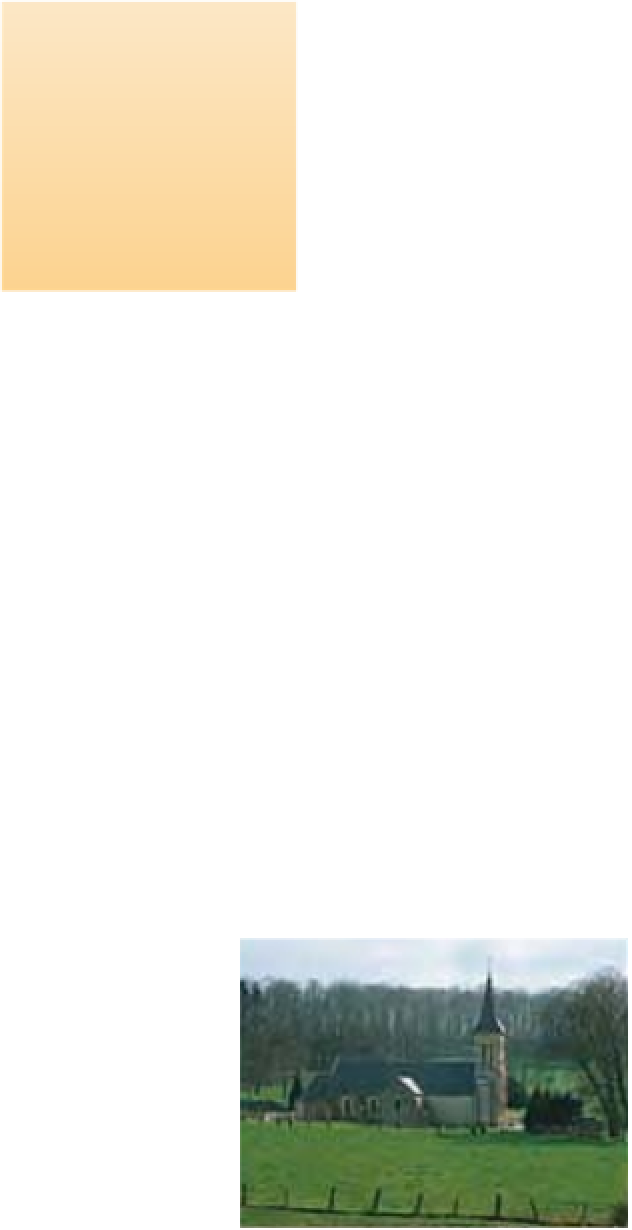Travel Reference
In-Depth Information
creating steep banks and the
occasional severe peak. The
scenery along the valley is among
Normandy's most striking. None
of the “heights” are really that
high, but they provide some
dizzying views - and plenty of
scope for outdoor pursuits. Many
come for the canoeing, walking,
fishing or rock-climbing; others
come to hang-glide off the Pain
de Sucre. Another high point is
the craggy Roche d'Oëtre, with
magnificent views over the Rouvre
gorges and beyond. The principal
tourist centres are Thury-
Harcourt, Pont-d'Ouilly and Clécy
(see p90)
.
d
Map D4, D5
•
Tourist
office: pl du Tripot, Clécy. 02 31 69 79 95
Calvados
The creation of Normandy's
famous cider brandy is an art with
many subtle variations. Look out
on the label for VSOP (four years
in the barrel), and Napoléon, Hors
d'Age or Age Inconnu (at least five
years in the barrel). Drink as a
digestif
, or follow French tradition
and add a splash of
calva
to your
coffee. If any excuse will do, knock
back a
trou normand (see p55)
.
Falaise
The dashing equestrian
statue of William the Conqueror,
his charger rearing heroically,
sets the tone in the main square
of this attractive and intriguing
town. Falaise is dominated by its
vast fortress, Château Guillaume-
le-Conquérant, birthplace of
William in 1027. In August 1944,
it was the site of the fierce and
decisive Battle of the Mortain-
Falaise Pocket. In the valley below,
a modern sculpture recalls the
spot where William's father,
Robert the Magnificent, saw his
future wife, the beautiful Arlette,
washing clothes in the stream.
Also worth a visit are Automates
Avenue, a collection of 20th-
century automata that once
graced Parisian shop windows,
and Musée Août 1944, housed in
a former cheese factory.
d
Map E4
•
Tourist office: Le Forum, blvd de la
Libération. 02 31 90 17 26
Evreux
Capital of the
département
of Eure, Evreux has had a turbu-
lent history and more than its fair
share of siege and invasion since
the Vandals first sacked it in the
5th century. Damaged during
World War II, its centre has been
rebuilt, and its gardens, footpaths
and riverside walks make it a
very pleasant town. In the
Cathédrale de Notre-Dame, the
Renaissance carvings round the
north door date from the height
of the Flamboyant period, as do
the marvellously delicate leaf
and flower motifs in the transept
and the lantern tower. Despite
La Suisse
Normande
Hardly the Alps, but this
popular, scenic region is
as close to Switzerland
as Normandy gets, and
is very different from the
typical Norman land-
scape. On its winding
northwesterly course,
the River Orne has cut
through the
massif
,
Swiss Normandy
For more on William the Conqueror
See p15
88









